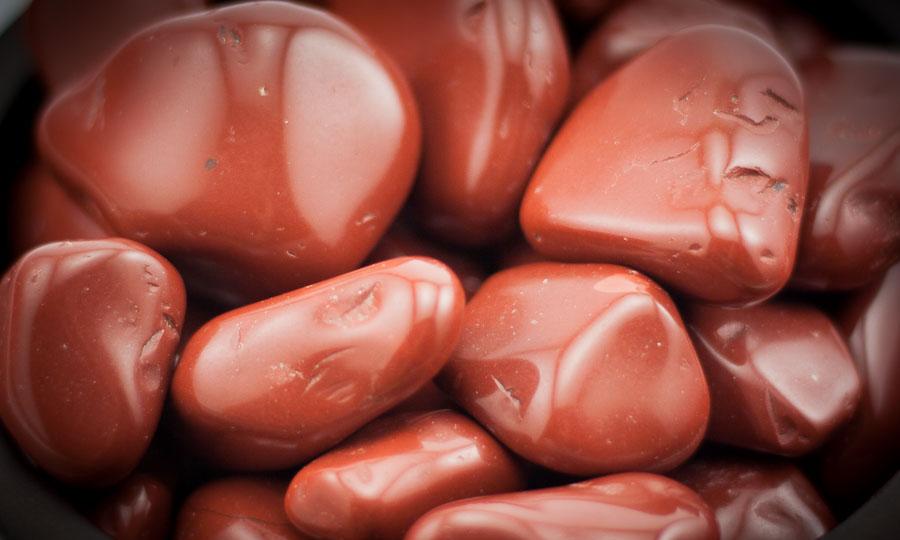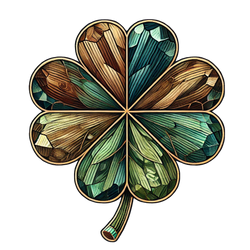You will not be allowed to compare more than 4 products at a time
View compareRed Jasper Tumbled 1 lb
Red Jasper Tumbled 1 lb
Estimate delivery times:5-8 days.
Flat Rate Shipping and FREE Shipping on orders more than $100.
About This Product
Red Jasper – The Stone of Strength, Stability, and Sacred Fire
Introduction
Red Jasper’s deep red tones evoke the very essence of earth and blood – an opaque crimson often marbled with subtle bands or speckles that add organic beauty. This earthy opacity gives the stone a comforting heft and a grounding presence, while a gentle polish reveals a smooth vitreous sheen, like a quiet glow from within. Often called a “Stone of Endurance,” Red Jasper is both grounding and inspiring. It invites you to pause and feel the stability of the ground beneath you – holding it can feel like reconnecting with the heartbeat of the land, fostering a sense of balance and inner calm. There is a reassuring warmth to its touch, a sacred stillness that steadies the spirit amid life’s storms.
Historical and Cultural Background
Since antiquity, Red Jasper has been treasured as a stone of protection, vitality, and courage, woven into the myths and artifacts of many cultures. In ancient Egypt it was linked to the lifeblood of Isis – revered as the “fertilizing blood of Mother Isis” – and was carved into sacred amulets placed with the dead to ensure protection and rebirth in the afterlife. Across Mesopotamia and the Mediterranean, warriors carried Red Jasper into battle as a talisman of strength: it was commonly set into amulets and seals to guard against injury and evil, its blood-red hue thought to shield the wearer from negative energies and danger. The Romans associated Red Jasper with Mars, the fierce god of war, seeing in its crimson color the essence of martial power and protection. Indigenous peoples have also revered this stone – for example, some Native American tribes called red jasper the “blood of Mother Earth,” a sacred symbol of the land’s lifeblood and renewal. They used it in healing ceremonies and vision quests, believing it provided grounding, endurance, and protection on both physical and spiritual journeys. Through each era and culture, Red Jasper earned a legacy as a warrior’s stone and a guardian of life’s sacred force, treasured not only for its beauty but for the steadfast strength it was believed to impart.
Metaphysical Symbolism
In the realm of crystal lore, Red Jasper is a stone of enduring strength, stability, and protection. It resonates with the Root Chakra at the base of the spine, anchoring one’s energy firmly to the earth and infusing the body with a sense of safety and balance. Like a sacred fire glowing in embers, it stokes inner courage and vitality – many describe it as lighting a spark of strength and stamina that helps one persevere through challenges. Red Jasper has long been said to absorb negativity and ward off misfortune, creating a gentle shield that protects the wearer from external harm and energy drains. It earns its nickname “Stone of Endurance” by imparting resilience: its energy is steady and nurturing, believed to bolster one’s life force (chi) and rekindle passion and determination when hope runs low. Spiritually, this crimson jasper connects to elemental earth and fire; it encourages grounding (staying present and centered) even as it fuels passion and willpower to pursue one’s goals. On an emotional level, Red Jasper is a comfort stone – its calming vibrations help soothe anxiety, foster emotional equilibrium, and inspire the confidence to meet life’s tests with grace. By balancing primal energy (root chakra) with gentle encouragement, Red Jasper symbolizes the union of strength and compassion: it teaches that true courage can be both bold and kind, hot like fire yet steady as a mountain.
Luxury and Decorative Appeal
Lustrous and robust, Red Jasper has a long history of use in fine ornamentation and remains popular in modern design. With a hardness around 6.5–7 on the Mohs scale, it withstands carving and polishing, making it ideal for jewelry and decorative objects. In ancient times, artisans carved red jasper into intaglio seals, signet rings, and inlays – the Romans, for instance, fashioned it into engraved gems and amulets as both artwork and protection. Today, its bold color lends a dramatic touch to jewelry: cabochons of Red Jasper adorn rings, pendants, and statement necklaces, their rich red providing an earthy elegance against metals or beads. Crystal collectors often carry tumbled Red Jasper as worry stones or palm stones – smooth oval pieces kept in the hand or pocket to rub gently in stressful moments for comfort and grounding. In spiritual spaces, Red Jasper finds its way onto altars and meditation areas, whether as polished spheres, pyramids, or natural chunks, to invoke stability and strength in the environment. When highly polished, this stone takes on a glassy shine that accentuates its patterns; it has even been used in luxury décor items (from vase inlays to ornate mosaic tiles) for centuries, valued for its durability and vivid hue. Whether set in a silver cuff, carved into a small figurine, or simply displayed in a bowl of mixed tumbled stones, Red Jasper exudes a warm, grounding beauty that appeals to designers and collectors alike – a timeless accent that brings the raw, reassuring energy of the earth into any setting.
Scientific & Gemological Profile
Even as it inspires with mythic and spiritual lore, Red Jasper is very much a subject of science – a distinctive variety of quartz with known physical characteristics. Below is a factual profile of Red Jasper’s gemological properties:
-
Composition: Silicon dioxide (SiO₂) chalcedony – Red Jasper is a cryptocrystalline form of quartz. It is an impure, silica-rich aggregate intermixed with iron oxide and other minerals, which give it the signature red color. In essence, it’s an opaque variety of chalcedony colored by finely dispersed hematite/iron inclusions.
-
Hardness: 6.5 – 7 on the Mohs hardness scale. This means Red Jasper is relatively hard and suitable for carving and wear, comparable to most quartz gemstones.
-
Crystal System: Trigonal (microcrystalline quartz). Jasper itself does not form visible crystals; it occurs as massive or granular formations. Its internal structure is that of quartz (which is trigonal/hexagonal), but jasper’s microcrystalline nature means it appears as compact, uncrystallized masses.
-
Luster: Typically dull or waxy in its raw state; polishes to a vitreous (glassy) luster. A well-polished Red Jasper gem or cabochon will shine, whereas unpolished fragments look matte or earthy.
-
Transparency: Opaque. Red Jasper does not transmit light due to myriad inclusions and its dense microcrystalline structure. (Some other jaspers or agates can be translucent in thin slices, but pure red jasper is generally fully opaque.)
-
Cleavage: None (cleavage is indiscernible). Red Jasper, like all chalcedony, has no true cleavage planes. It breaks with a conchoidal fracture, meaning pieces flake off in smooth, curved surfaces (similar to glass or flint). This quality made jasper useful for ancient toolmaking as well as carving.
-
Color Range: Predominantly brick red to brownish-red. Its colors can range from bright red or rust-red to deeper brown-red tones, often streaked with beige, brown, or black veins. The red pigmentation comes from iron (III) oxide inclusions. Some Red Jasper may show patterns like dark flecks, iron banding, or swirls of other colors (gray, cream) due to mineral impurities.
-
Notable Variations: There are named varieties of jasper distinguished by pattern. For example, Poppy Jasper is a form of red jasper that displays orbicular spots or “flower” patterns of red, yellow, or black, resembling bursts of poppies. Brecciated Jasper is red jasper mixed with hematite and quartz, appearing as a network of red fragments veined by grey or clear quartz. All these are essentially Red Jasper with unique inclusion patterns, treasured for their distinctive appearance.
-
Primary Sources: Found worldwide. Major deposits of high-quality Red Jasper come from Brazil, India, Australia, Madagascar, and the United States, among other regions. It often occurs in large seams or nodules within ancient volcanic or sedimentary rocks. Historically, India (particularly the Deccan plateau) has been a prolific source, as well as parts of Africa and Siberia.
-
Identifying Features: Red Jasper is identified by its uniformly opaque red color and solid feel. Unlike transparent red gems (like ruby or red garnet) or banded agates, jasper shows no light through it and typically has a homogenous, earthy appearance. It may include speckles or veins of hematite, clay, or other minerals, but lacks the crystalline sparkle of other quartz. The combination of hardness, opacity, and red coloration (often with mottled patterns) is diagnostic. It will streak white (a trait of quartz family), and under a magnifier you might see grainy quartz textures rather than crystal faces. These traits, along with its distinctive “brick red” tone, make Red Jasper fairly easy to recognize for collectors.
Each piece of Red Jasper is a uniquely patterned snapshot of geology – a blend of silica and iron that formed over eons. Whether admired for its aesthetic charm, cherished for its mythic symbolism, or studied for its mineral makeup, Red Jasper stands as a timeless gemstone that bridges the earthy and the sublime, grounding us in its beauty and history.
Sub total:
$27.49





